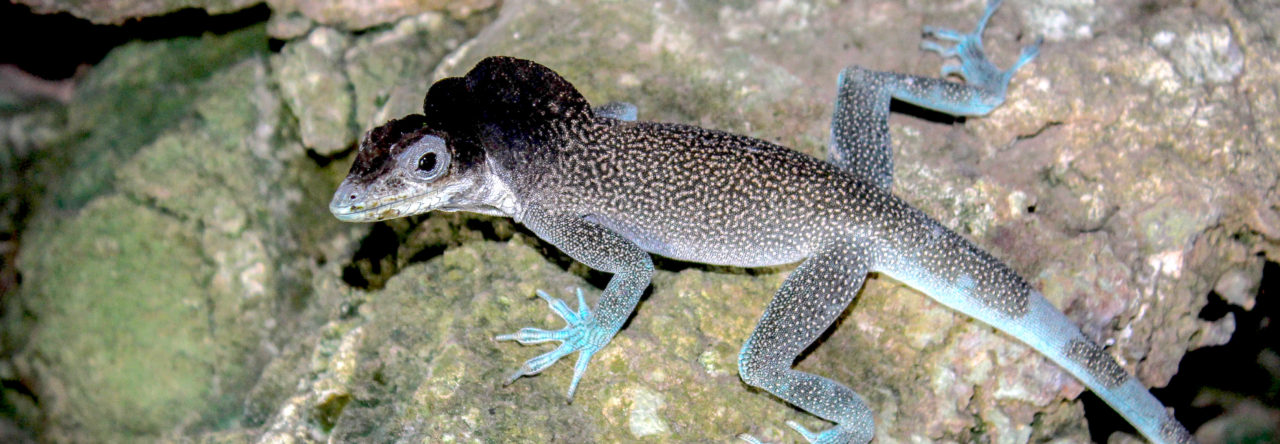Apologies for the messiness of the formatting; this is my first blog post, and it only got here with a lot of technical support from JLo! History is full of examples of the little guy getting left behind. Unfortunately, so is the study of anoles. Most anole studies focus on adult lizards, and while there is certainly much to be learned from adult-focused studies, to ignore juveniles is to cheat ourselves of a great opportunity to better understand Anolis life history.
As readers of this blog likely appreciate, anoles are a model system for understanding evolution. To gain a comprehensive understanding of the factors that led to their stunning diversity, it’s important that we understand how selection acted upon these lizards at all stages of life – not just adulthood. A lizard has to survive from hatchling to reach adulthood and until we know more about how juveniles interact with their environment we cannot determine whether selection has shaped the juvenile stages with the same intensity as it has adult traits.
Thom Sanger wrote an earlier post that discussed the growth of Anolis limb length: “Growing Limbs – But Not the Kind With Leaves.” According to his post, variation in adult limb morphology can be traced “all the way back to the point in development when the cartilaginous long bone anlagen are just forming.”
This past summer, I worked with Thom, Michele Johnson (Trinity University), and Trinity undergraduates Ellee Cook and Diego Castro to study the morphology and behavior of juveniles on grounds of the Coral Sol Resort in Barahona, Dominican Republic. My goal was to understand whether juvenile lizards behave similarly to adults and whether juveniles have the same body proportions as adults. There are four anoles on at Coral Sol: A. brevirostris, A. coelestinus, A. olssoni, and A. cybotes. Unfortunately, we could not find enough juvenile A. olssoni to include in this study.
My findings are consistent with Thom’s previous paper. Limbs maintain the same proportions throughout a lizard’s life, from the juvenile stage to adulthood. Head proportions, on the other hand, change with age, as does dewlap size.
Juveniles tend to follow the behavioral trends of their adult counterparts. For example, as adults, A. brevirostris moves more than A. coelestinus moves more often than A. cybotes. These same trends are observed in the juveniles of those species.
The morphological and behavioral variation among adult anoles seems to be established at an early life stage for these species. Of course, there are still questions about the relationship between juveniles and adults. Does juvenile behavior persist into adulthood because that specific amount of movement is advantageous at all times of life or merely because that rate is beneficial at one stage and the other responded to selection secondarily? Similarly, the same question might be asked about persistent morphological traits, such as relative like limb length. The missing link here is performance and ecology. There is a strong correlation between relative limb length, perch diameter, and sprint speed as adults. Do these same correlations hold as hatchings? Amidst all of these questions, one thing is for certain: juvenile anoles deserve a lot more attention, so get studying, anolists!
- Anoles in Paris - July 12, 2012
- Wanted: Anolis brevirostris Juvenile Photo - April 23, 2012
- Looking Out for the Little Guy - December 15, 2011




mjohnson216
Great post, Natalie! (And it was a great trip, too!)